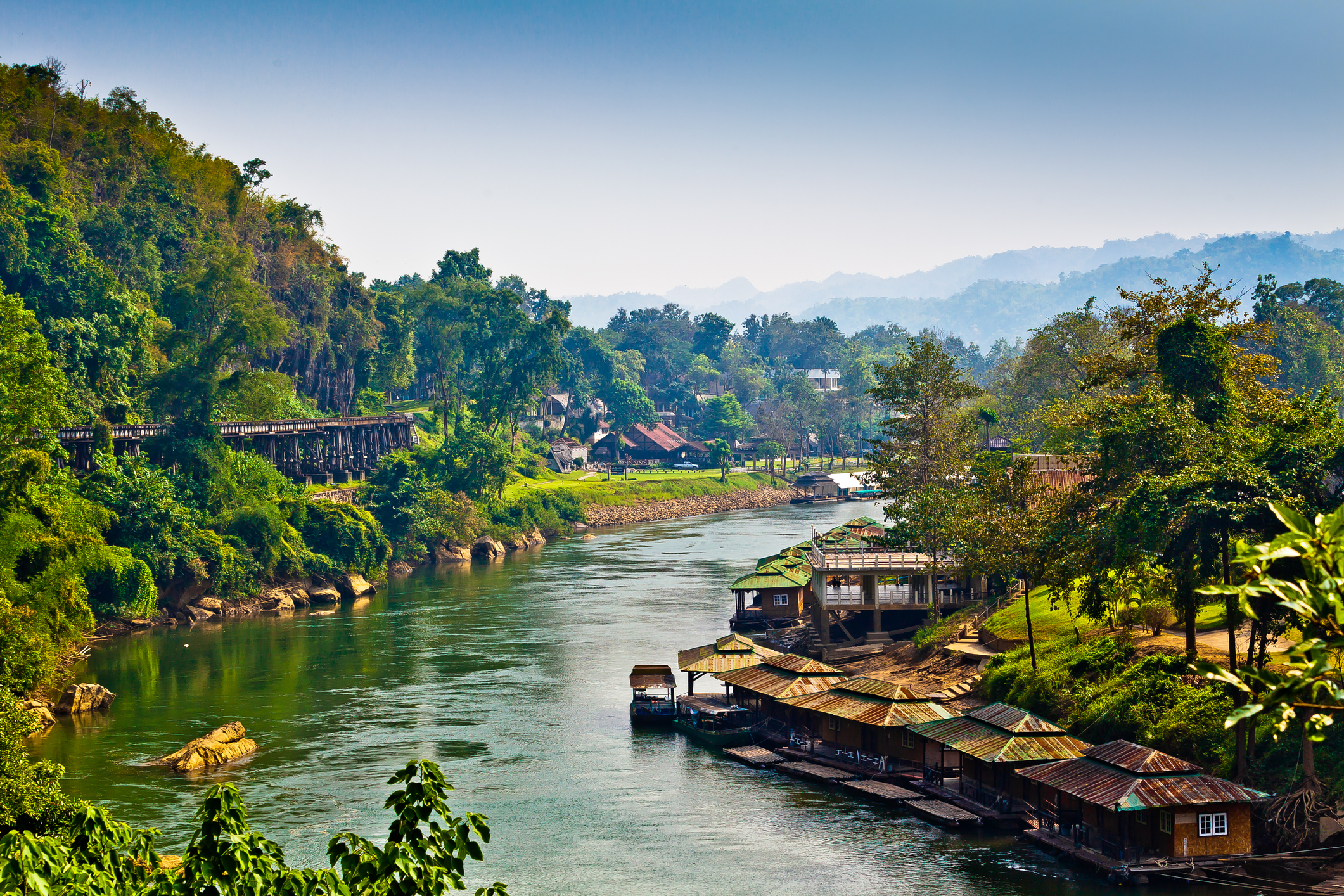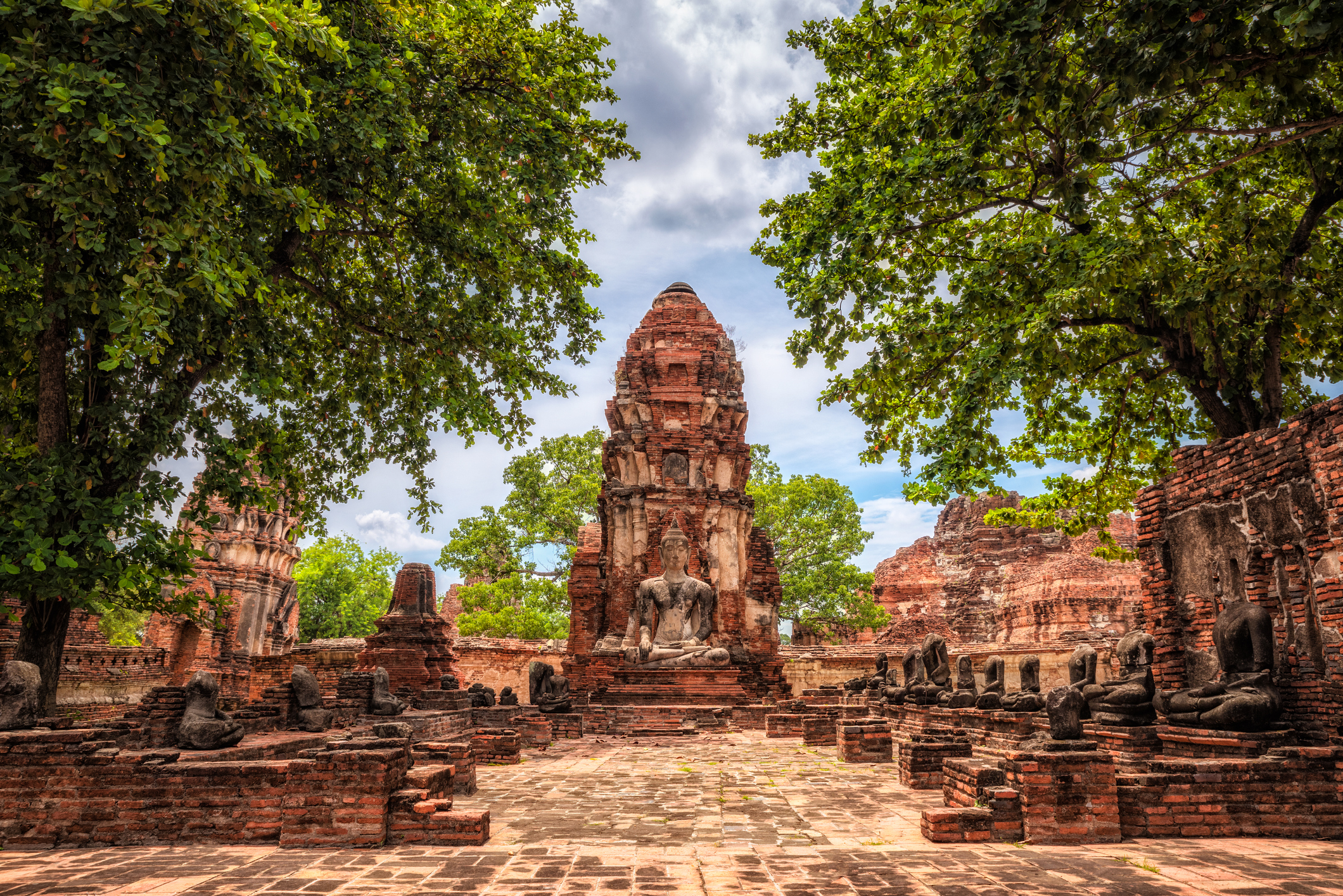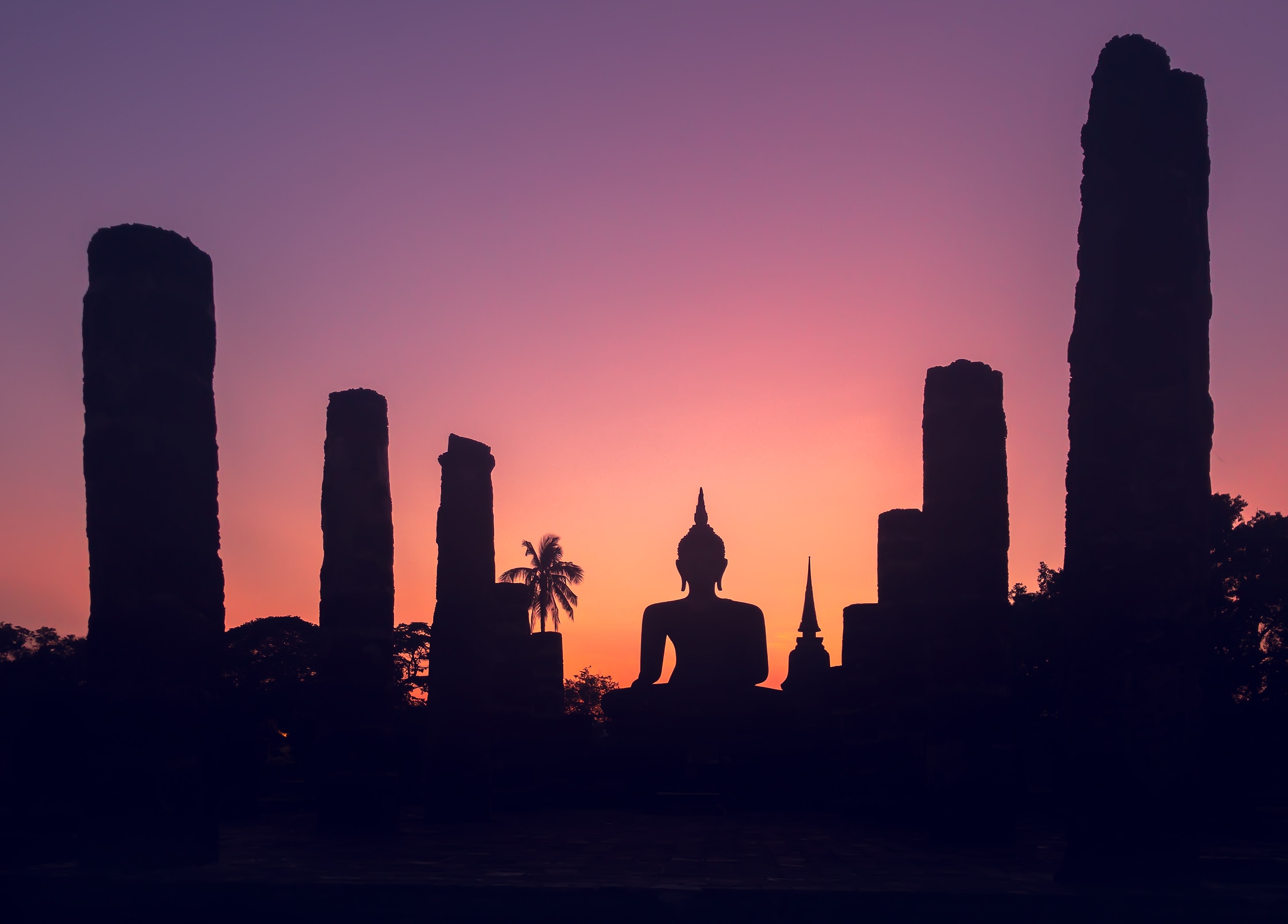
Kanchanaburi
Three hours’ drive from Bangkok, in a sleepy, riverside town surrounded by jungle, is the site of one of the most traumatic periods in Thai history. This is Kanchanaburi, home of the real-life Bridge on the River Kwai.
It was WWII, and the Japanese were advancing through Southeast Asia. They had invaded Thailand (then Siam) in 1941, and were building a railway that would help them push onwards through Burma. Bridge 277, or the Bridge on the River Kwai, was just one link in this so-called “Death Railway”, which is thought to have claimed the lives of over 100,000 conscripted civilians and Allied prisoners of war during the course of its construction.
Today, the bridge stands peacefully over the languid river, traversed every now and then by a trundling, old-fashioned train. All in all, it gives little indication of the suffering it once caused, but this is a chapter of history that hasn’t been forgotten. Modern Kanchanaburi is peppered with monuments to the people who died here, including a cemetery dedicated to the POWs, and museums where you can read first-hand accounts of prisoners’ experiences. It’s not an uplifting experience, but it’s certainly a fascinating one.
Though WWII history is an unmissable part of a visit to Kanchanaburi, don’t miss the province’s more lighthearted attractions. Within easy reach of the town are otherworldly waterfalls in forested national parks, old Chinese-European houses and prehistoric cave paintings, temples crammed with tiger statues, and the westernmost ruins of the mediaeval Khmer Empire.


